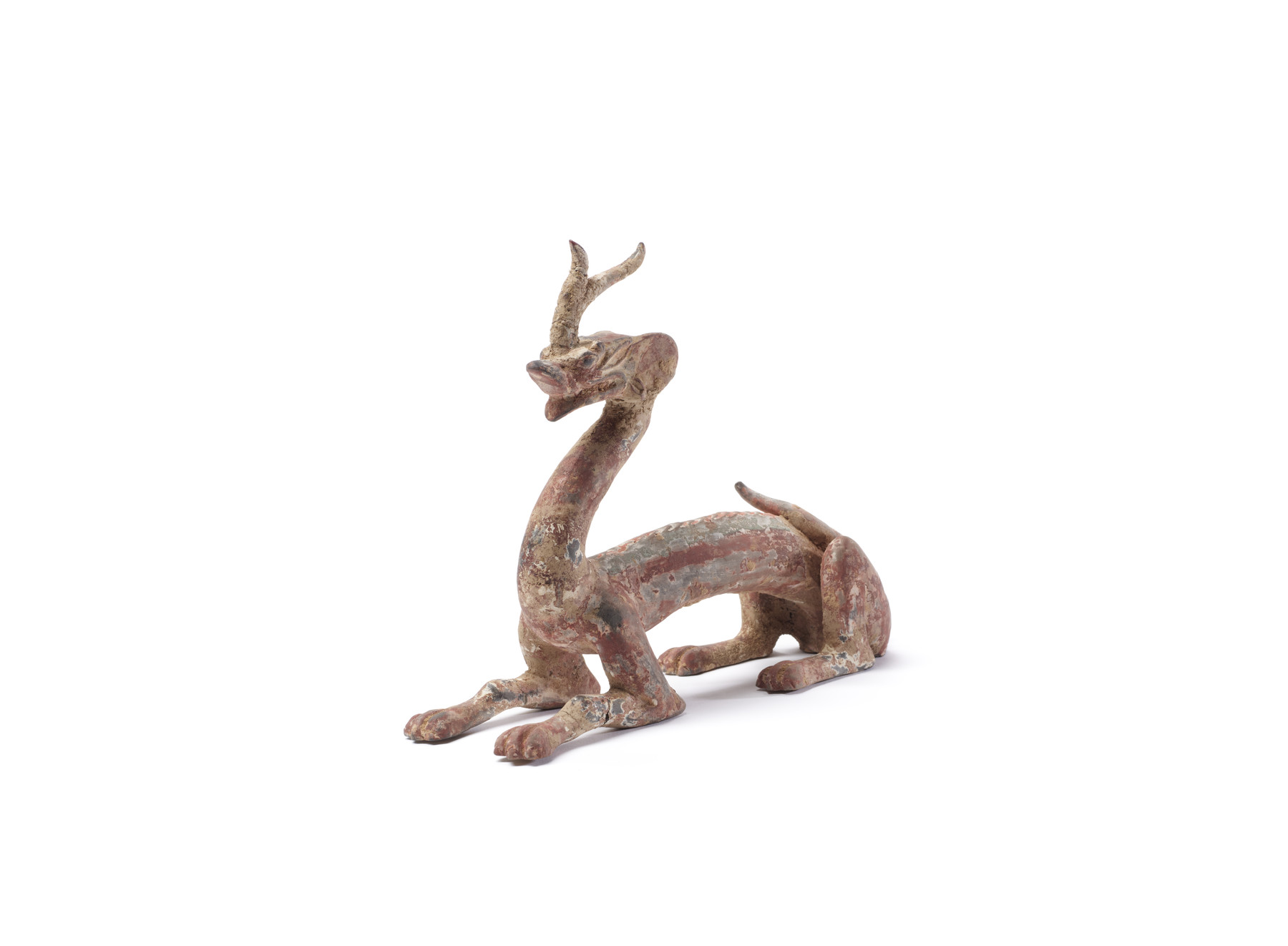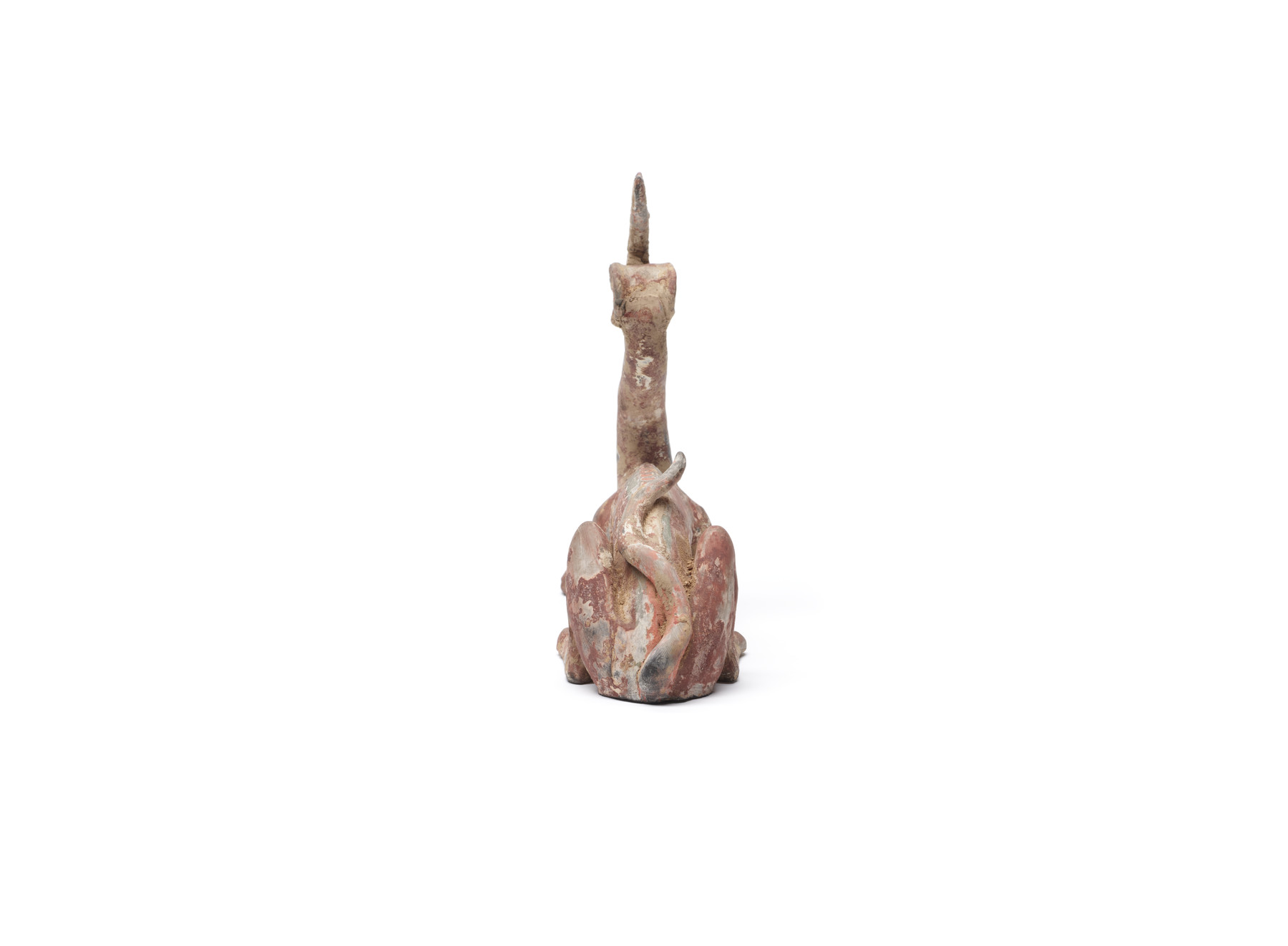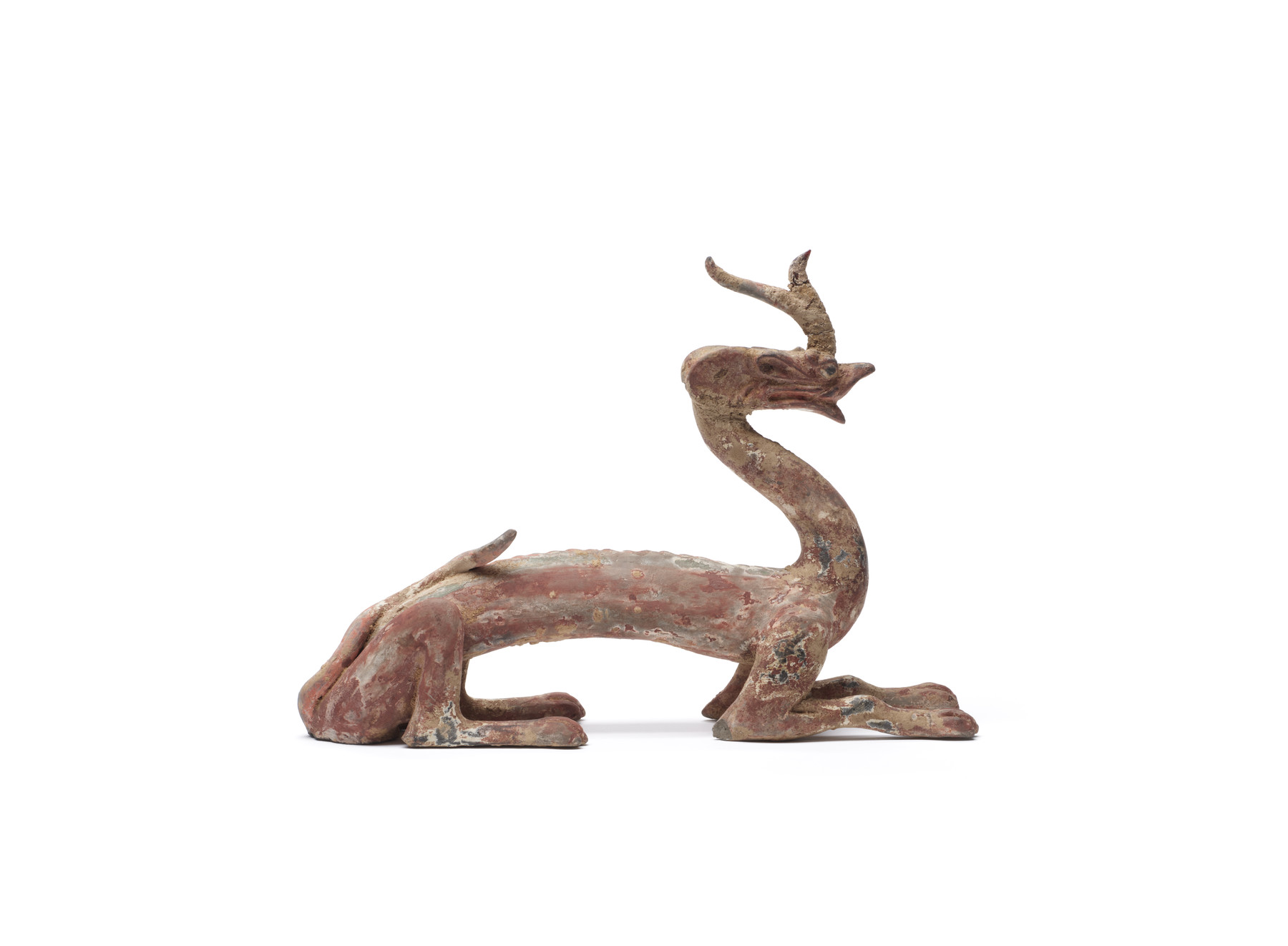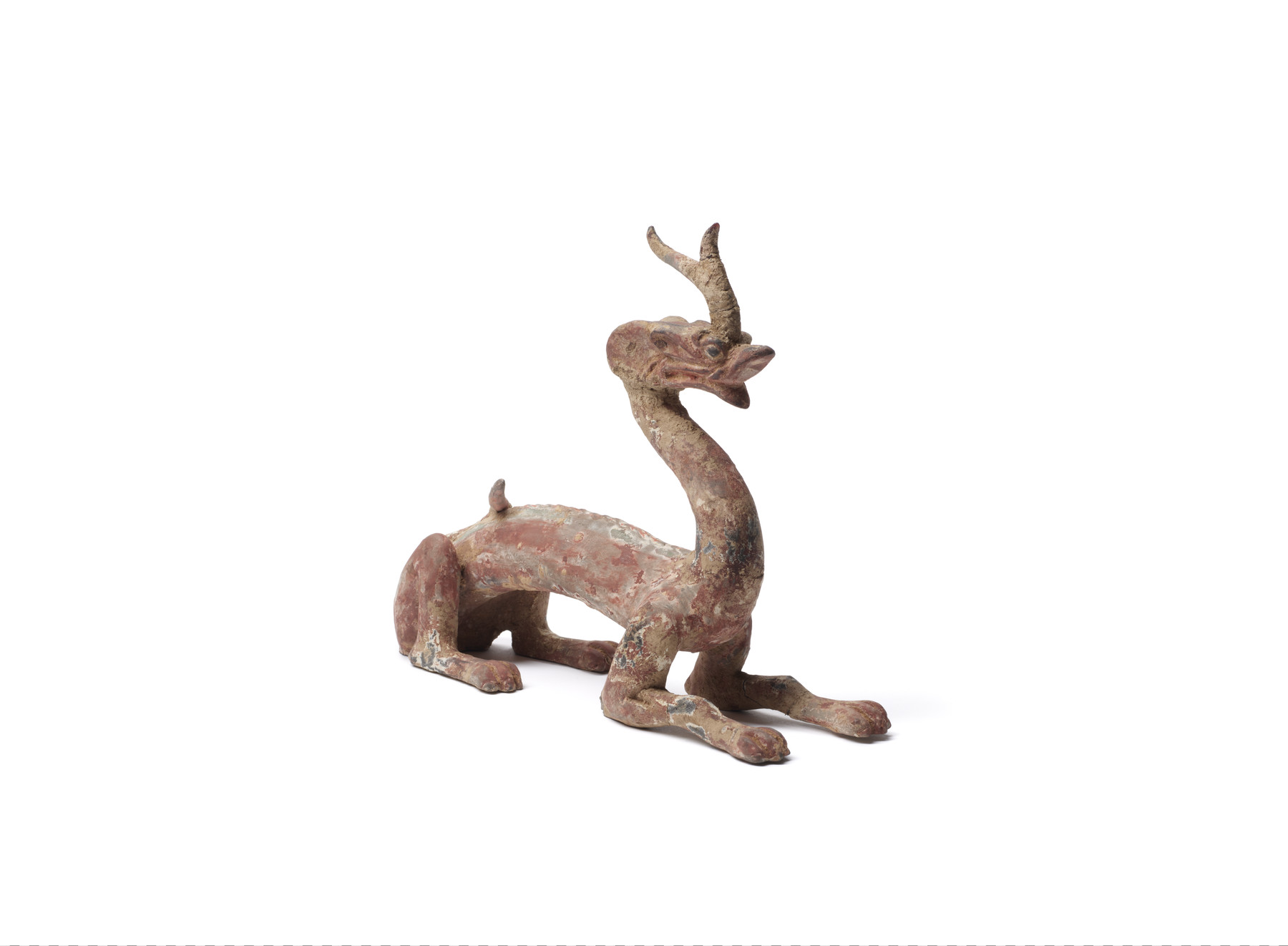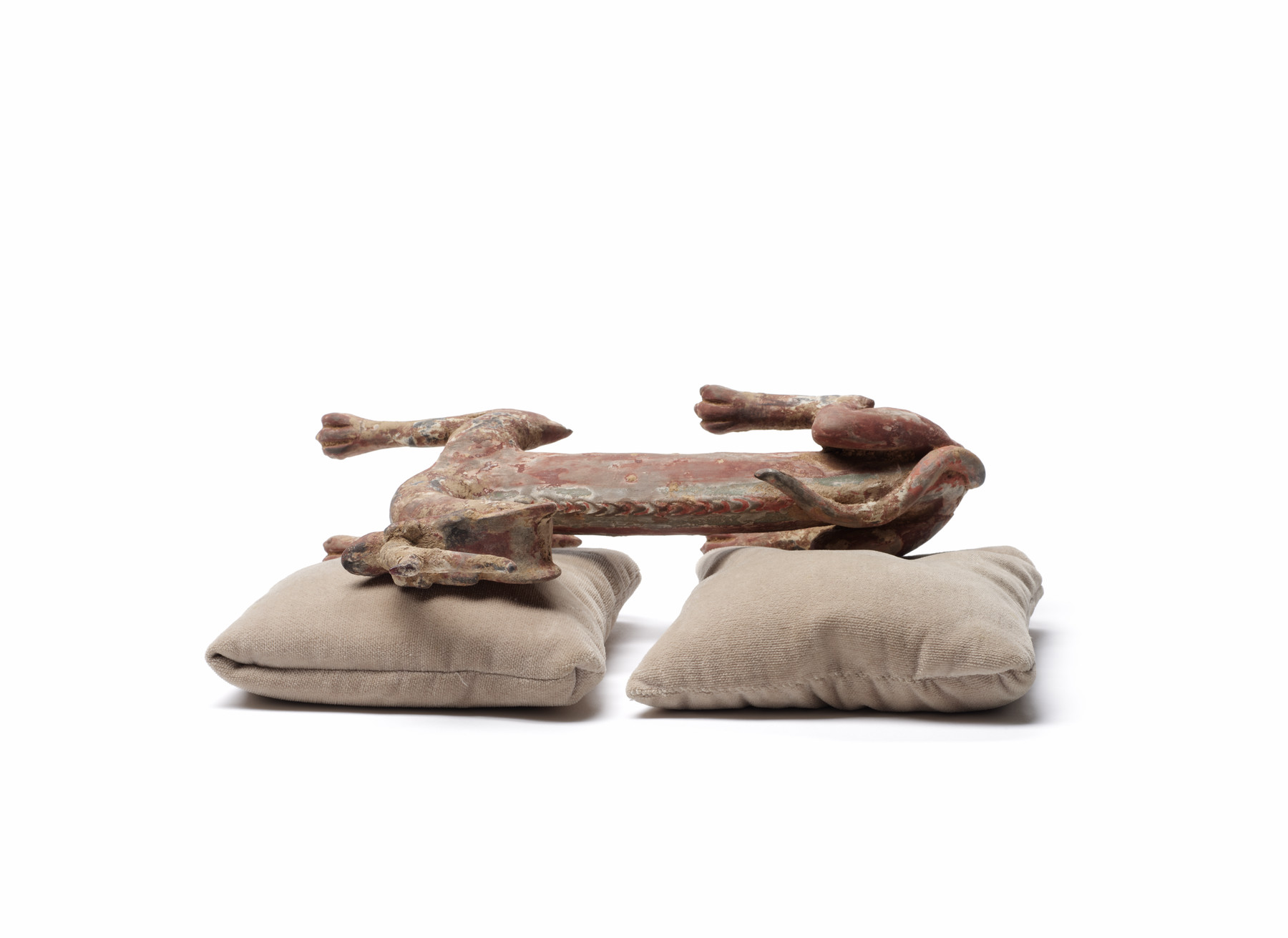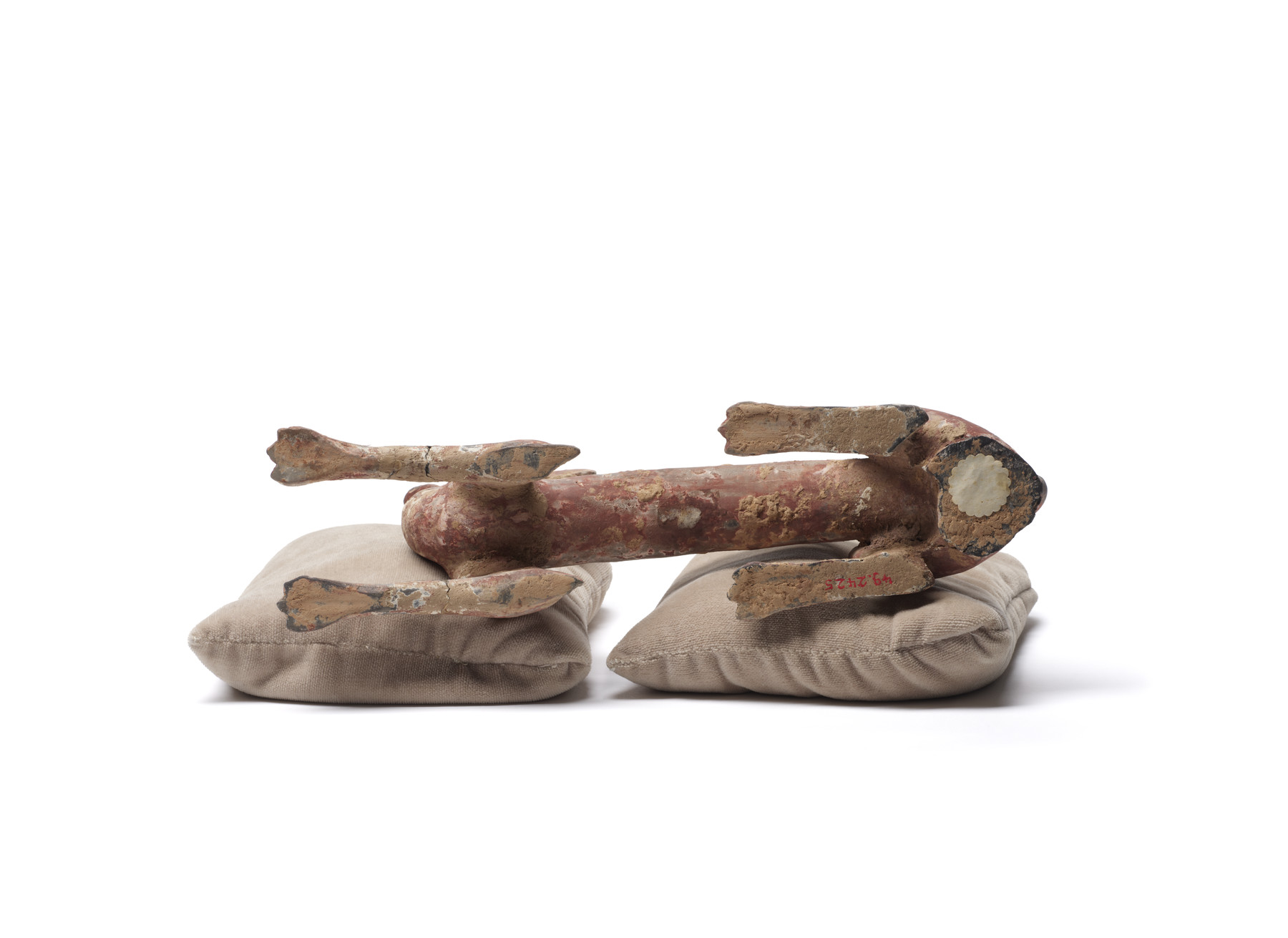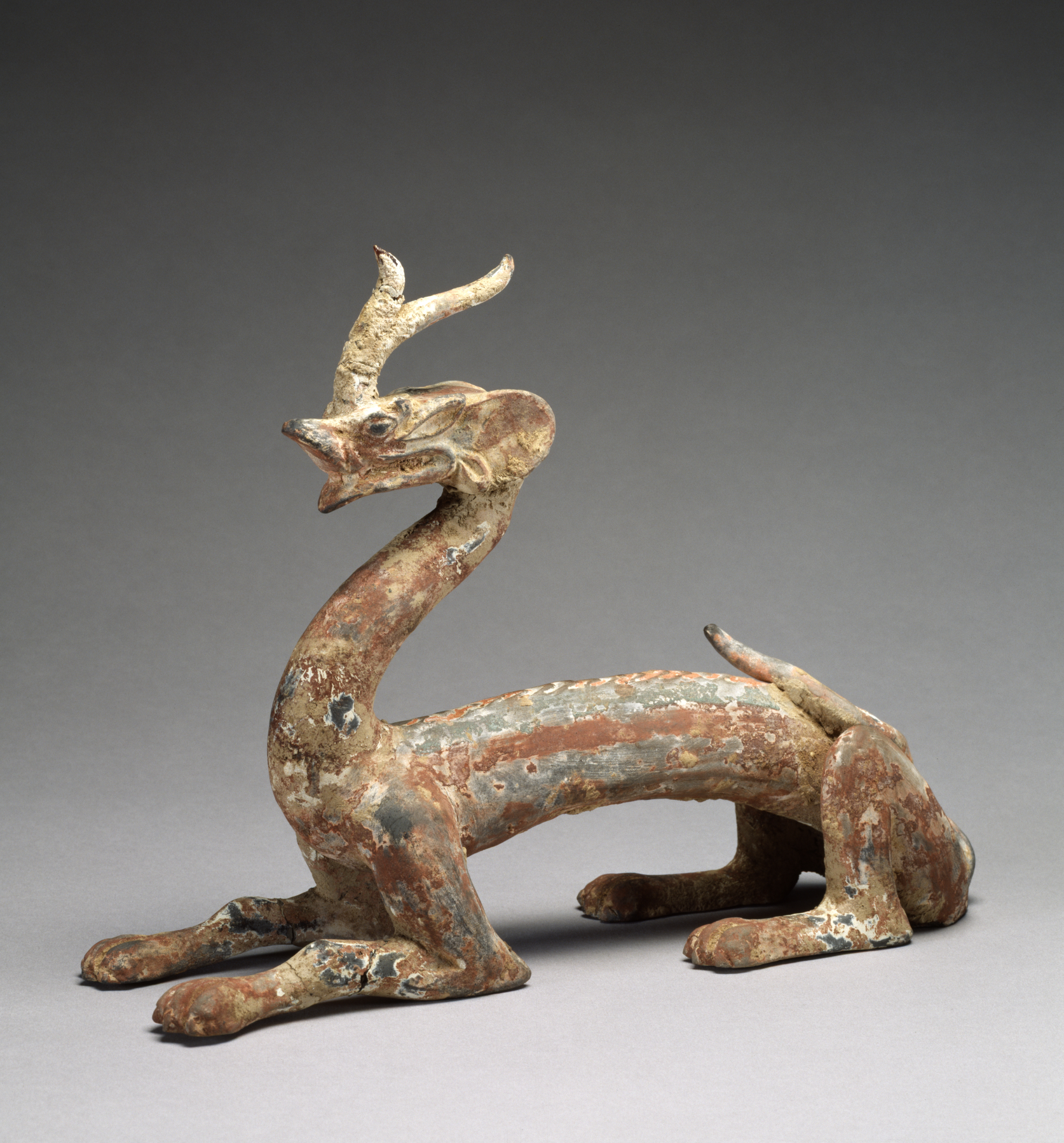Dragon
(China )
This painted sculpture of a dragon most likely came from a tomb, and suggests the dragon’s importance in 4th-century funerary beliefs as a creature capable of traversing between worlds and transporting souls into a glorious afterlife. The dragon was also capable of numerous physical transformations.
Rituals and paraphernalia to mark death reflect China’s changing beliefs connecting death, the soul, and the afterlife. By the 4th century BCE, tomb designs and furnishings suggest a belief in the afterlife that took on different forms. One belief maintained that the deceased’s soul ascended to a paradise, while another proposed that the soul remains in the tomb. A third belief suggested a person had two souls that parted ways upon death: one traveling to paradise and the other remaining in the tomb. To prepare for any and all of these possibilities, tombs were decorated and furnished with reminders of an idealized everyday life and scenes of fantastical and heavenly worlds.
By the Tang dynasty (618–907), the practice of placing clay figures in human form in tombs was common among elite Chinese. Most figurines represented the attendants who may have served the deceased during their lifetime—including officials, warriors, entertainers, grooms, and servants—and continued to serve into the afterlife.
Provenance
Provenance (from the French provenir, 'to come from/forth') is the chronology of the ownership, custody, or location of a historical object. Learn more about provenance at the Walters.
Mr. and Mrs. Edward L. Brewster, Pikesville, Maryland; given to the Walters Art Museum, 1977.
Exhibitions
| 1978 | Netsuke: Miniature Sculpture of Japan. The Walters Art Gallery, Baltimore. |
Geographies
China (Place of Origin)
Measurements
H: 10 1/8 x W: 2 7/8 in. (25.7 x 7.3 cm)
Credit Line
Gift of Mr. and Mrs. Edward L. Brewster, 1977
Location in Museum
Not on view
Accession Number
In libraries, galleries, museums, and archives, an accession number is a unique identifier assigned to each object in the collection.
In libraries, galleries, museums, and archives, an accession number is a unique identifier assigned to each object in the collection.
49.2425

